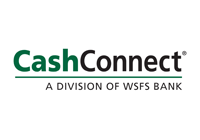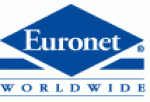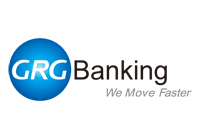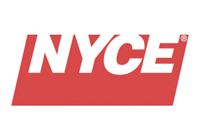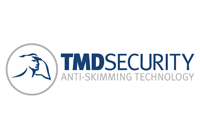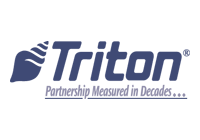

ATMIA Sponsors Spotlight ATMIA is proud to have industry leaders as regional and global sponsors. Hear from some of our sponsors and the work they are doing for the ATM Industry. Click on the logo to read the company's article or simply scroll down.
By: Gabrielle Toman In a world where credit cards, mobile payments, and e-commerce would seem to be the next trajectory for payment industries, cash still reigns supreme. Cash continues to be the main form of payment in the United States, and Cash Connect is a company that fully embraces that fact. The Delaware based business has been managing cash and cash logistics for the last 20 years, and continues to see the influence that cash plays throughout the nation. Tom Stevenson, President and Founder of Cash Connect, stated that, "The importance of innovation and creation of value-add services are crucial to the vision of Cash Connect. Adapting to changes in the market has always allowed Cash Connect to stay successful in providing cash and logistics to the US payments industry." The company has been an early of adopter of new ideas in the marketplace and an agent of change in the payments industry since its inception. In 'The State of Small Business Report' from Wasp Barcode Technologies, it concluded that three of the five biggest challenges that small businesses across the country face are Increasing Profits, Growing Revenue, and Managing Cash Flow. A Turnkey Smart Safe Solution provides an answer to these three challenges. A Smart Safe is essentially the smart phone of cash management. Before owning a smart phone, we failed to realize the everyday challenges of communication. Now, we cannot spend time without them. That is the same impact a Smart Safe will have on a merchant. It is a physical and intelligent cash management system that tracks, stores, and reconciles cash sales. Smart Safe's are most beneficial when used in cash intensive businesses; however, the benefits can influence several additional sectors of business. For merchants, the Smart Safe offers a convenient solution to the time consuming and potentially dangerous task of managing cash. It provides enhanced cash management with increased efficiency and safety for employees. There is no work do be done on the merchant's side. Cash Connect's turnkey solution offers a seamless installation, easy to use technology, expedited cash flow with daily cash deposits, and the customer can keep their existing bank relationship in place. The partnership opportunities for Independent Sales Organizations, Armored Carriers, and Community Banks are enormous. It creates an opportunity to gain new lines of revenue, leverage existing relationships, improve their customer's overall experience, and be a part of a much larger movement in cash logistics. The Smart Safe represents where the cash management industry is heading, and Cash Connect is proud to offer this product to their customer base. Top Considerations When Choosing ATM Channel Management Software Many financial institutions are forced to find ways to reduce operating costs while increasing revenue from their ATMs. Many are also dealing with the added frustration of managing a mixed ATM fleet with various sets of drivers and features that require multiple efforts for redundant tasks. Organizations are looking to find a remedy that will not only streamline their ATM fleet management, but also provide a competitive edge. If your organization finds itself weighing the pros and cons of ATM channel management solutions, it's worthwhile to evaluate the solution's capabilities on these three key considerations: 1. Does the solution expand your service offerings and satisfy consumer demands? In today's environment, ATMs must provide more than account balance retrieval and cash dispensing. Consumers expect their experience to be consistent, intuitive and personalized. To satisfy these expectations, your solution must support the latest ATM services. To ensure that the user experience is timely and relevant, the solution must facilitate the strategic deployment of campaigns and greetings, user preferences, and other offerings. This enables you to reach the right customer at the right place with the most appropriate offerings and services. 2. Does the solution facilitate ATM targeted marketing? Unlike other marketing channels, the ATM environment represents a captured and focused audience. It's not surprising that ATM marketing response rates have proven to be 10 percent and higher, versus traditional direct mail response rates of 1 to 2 percent. ATM management solutions that facilitate true targeted marketing will deliver better results than an email or direct mail. Results oriented solutions will include tools that overcome typical ATM marketing deployment issues and deliver better responses, such as marketer friendly campaign design, creation and deployment tools that completely remove the need for software programmers, and 1:1 recognition features that enable the ATM to present specific offers based on the consumer's profile. 3. Is the solution manufacturer agnostic? It's not uncommon over time to grow or inherit a fleet of ATMs. The unfortunate result is an increase in time and effort to make consistent changes across the diverse set of configurations. Agnostic ATM solutions are a must-have for organizations who are seeking the efficiencies of standardizing on one manufacturer platform while maintaining the flexibility of a multi-manufacturer environment. By consolidating to a single software application in your multivendor environment you can make needed changes once, and replicate it across the assorted fleet without duplicating effort, streamlining your development and support operations. You will also position your organization to select and deploy the best ATM for each particular site and implementation regardless of hardware vendor. There are many ways to address ATM channel management needs. Focusing on the big three helps to ensure an environment that provides improved efficiency and vendor independence, addresses evolving consumer demands, and utilizes your ATMs as a marketing engine. Most important of all, insisting on the big three arms you to further leverage your ATM for new revenue generating opportunities.
With the rapid development of the information science and technology as well as the emergence of various payment methods, all the traditional branches are facing challenges of transformation. In order to meet the market demands and the trend of development, GRGBanking devotes its great effort to explore and develop innovative banking transformation solutions. And innovative products – Video Teller Machines (VTM) it were successfully launched. VTM is a is a pioneering banking channel solution that integrates video conferencing technology with the merits of self-service and counter service, providing full range banking experience with smaller footprint. It can result in a truly different and better intelligent experience to consumers. VTMs incorporate many of the features available via an ATM as well as offer the ability to conduct a video chat with a live agent and transact other business beyond the normal range of ATM's functionality. VTMs incorporate the features of an ATM, bank branch and call center as well as mobile and internet banking to create a new channel to serve customers. The VTM offers a full range of banking services to both corporate and retail customers. Compared with a brick-and-mortar bank branch, the VTM carries much lower fixing and operational costs, enabing a financial institution to expand its reach at a significant saving. Real-time visual and biometric processes help deter illegal usage even in the case of a stolen ID, and the video record kept by the VTM serves as added security. Now, GRGBanking's VTM has been put into use to support branch transformation in a number of famous banks of both domestic and overseas markets, such as Standard Chartered Bank, HSBC, DBS, TPB, Wing Lung Bank, etc. It brings consumers better and intelligent experience, and efficiently lowers cost and increase the benefit through transforming branches for banks. GRGBanking is a top international provider of cutting-edge currency recognition and cash processing solutions, and concentrates on development/ manufacturing of Automatic Teller Machine (ATM), Automatic Fare Collection (AFC) devices, as well as other currency recognition and cash processing equipment, modules and systems for over 20 years. Thanks to its commitment to innovation and technical excellence, GRGBanking has a strong independent R&D ability and comprehensive strength. GRGBanking is No.1 in market share in the domestic Chinese ATM market for 8 consecutive years and is now a "Top 4" manufacturer in the global ATM market. So far, GRG's products and solutions are widely used in over 80 countries and regions worldwide, with over 220,000 machines providing reliability, security and convenience to over 13 million people on a daily basis. GRG's comprehensive solutions have been widely used in Finance, Telecom, CIT, Railway and Retail sectors. Satisfied with 24/7 fast response, our global clients are receiving technical support, innovative solutions and industrial professional knowledge transmission from over 170,000 employees throughout the world. For more information please visit: http://www.grgbanking.com/en/index.html
FIS is leading the industry, partnering with an ecosystem of banks, networks and ATM providers to enable robust cross-channel interaction with its first-to-market Cardless Cash™, now live with over 35 banks nationwide. Recognizing the strategic opportunity for the industry, FIS is making swift progress to extend the solution, which offers users unmatched speed and convenience. To that end, FIS recently announced its partnership with PAI, the nation's largest, privately-held provider of ATM processing and maintenance services, ATM equipment sales and support. This agreement extends FIS Cardless Cash acceptance to PAI's 70,000 terminals (approximately one in six American ATMs) at gas stations, restaurants and shopping malls across the United States. It also makes NYCE the first national payment network to support mobile phone-to-ATM transactions. Banks and their customers benefit from the seamless integration of Cardless Cash within existing mobile banking apps. Users pre-order cash via their bank's app, leveraging the speed and security of biometric authorization. To complete the withdrawal, the user selects the mobile option at the ATM and scans a QR code, completing the entire transaction in about 10 seconds. There are minimal integration requirements for ATM deployers; the solution only requires a software update, without the costly hardware upgrades required for NFC acceptance. Eliminating the need for a plastic card and PIN also eliminates data interception and skimming fraud – enabling an economical solution for ATM owners to reduce post-EMV fraud risks and increase ATM usage. As a proof point of the solution's success, Cardless Cash has seen significant consumer adoption with over $50m in withdrawals since its inception. Additionally, showing its relevance beyond millennials, the average age of a Cardless Cash end user is 41 — making it a strong utility, with high perceived value by users of all ages.
ATM skimming is not new, but criminals are constantly inventing new, smarter ways to capture card data from the magnetic stripe.'Deep insert' skimming is a new skimming technique that originated in the UK but has now spread to North America and APAC. The number of reported incidents has been growing fast. It has been described by one major ATM deployer as the 'biggest skimming threat to the ATM industry' – and one that the industry is not prepared for. The deep insert skimmer, also known as a'card reader internal skimming device', is a very thin device that is inserted deep inside the card reader, allowing enough space for the card to enter and exit. It is designed to be left in situ for days, even weeks, and either stores card data locally, or transfers the data to a remote storage device. One deep insert skimmer had data from 10,000 cards stored on it when recovered. Jamming technology, while effective against standard skimming devices, was not designed to defend against deep insert skimming. What is more, these skimming devices cannot be detected. TMD Security's Card Protection Plate (CPP) is proven to be the most effective defence against deep insert skimming on ATMs and SSTs. The effectiveness of CPP is based on a simple principle: it prevents the insertion of 'deep insert' skimming devices. However the patented design and construction are very sophisticated: CPP is specifically designed for each card reader model, needs no maintenance and cannot be displaced or removed by unauthorized personnel. Most importantly, CPP protects cardholder data with no impact on the functionality of the card reader. CPP can be used with TMD Security's Card Protection Kit (CPK) and other complementary countermeasures such as TVK (Tilt and Vibration Kit), ATK (Anti-Trapping Kit) and SDK (Surface Detection Kit) for maximum protection against all types of ATM card fraud. CPP also defends against ATM shimming attacks. ATM shimmers are also thin devices and positioned inside the card reader but use a different technique. They do not physically copy, or skim, the data on the magnetic stripe but intercept the communications between the chip and the card reader. For more information on deep insert skimming and best practice defenses contact TMD Security: [email protected] or visit www.tmdsecurity.com. So let me get this straight, I have to PAY my bank to hold my money? Yes, you do. That is, if you live in Japan, Denmark, Sweden or Switzerland. In a development few could have predicted, interest rates in many countries have recently turned negative. This means that rather than paying depositors for their savings, banks actually take money from depositors each month! Central banks in many countries have reduced interest rates into negative territory in an attempt to stimulate economies and to increase inflation. They want banks to lend more and people to spend rather than to save. The verdict is still out on whether or not negative interest rates will accomplish these results. What is not in doubt is that retirees, savers and the banks themselves are being punished by negative interest rates and that the use of cash in these countries is growing. In the U.S., interest rates on deposits are already well below 1%, meaning that customers are essentially letting banks use their money for free. Consumers also know intuitively that if inflation is running at 1-2%, real interest rates are already negative. So what would happen if nominal U.S. rates were to actually turn negative? What would be the ramifications if even a modest percentage of the estimated $11 trillion in U.S. bank deposits were to move away from banks? A quick glance around the world tells an interesting story. Negative interest rates help to foster a false impression that banks are less safe. Many people assume that if banks take interest from borrowers rather than paying it, they must be less stable. Rumors of widespread Italian bank insolvencies and recent Cypress deposit confiscations have done nothing to assuage global concerns about banks. When consumers decide that the risks of depositing funds in banks outstrip the rewards of security and return on investment, they will find other alternatives, including holding cash. To be clear, we have yet to see any indication of depositors headed for the exits but if they do, the demand for cash could surge. The cost of holding cash is now very, very low. Near-zero or negative rates mean that cash holders are not forgoing a return on investment in order to personally hold cash. In Japan and other negative interest rate economies, sales of home safes have outstripped supply as consumers balk at leaving cash in the bank at negative interest rates. Presumably, these safes are being filled with physical cash. In the U.S., a 10% reduction in the amount of total bank deposits would result in demand for over $1 trillion in additional cash. With many disincentives for keeping cash under the mattress no longer in place, watch for a spike in the demand for cash. EMV hiccups may also drive an increased use of cash. For anyone who has followed the rollout of EMV in the U.S., the results to date have been less than stellar. Despite an October 2015 POS liability shift, EMV cards are still being issued to cardholders. Most merchants have yet to upgrade their POS terminals to EMV. For those merchants who have, many terminals have yet to be activated due to processor certification delays, manufacturer issues or just plain slow performance. In just over a year, the EMV liability shift for gas pumps is scheduled to take place. Industry estimates are that 50% of all gas pumps are in single-location stores, many with older pumps which require wholesale replacement for EMV. Given the lack of remaining time and the prohibitive cost of fuel island replacement, there is a fair chance that a large number of gas stations may have to abandon "pay at the pump" for the foreseeable future, further increasing the demand for cash. Customers simply like cash. Cash remains convenient, anonymous and a store of value. Cash convenience is generally understood to mean that cash is nearly universally accepted for the purchase of goods and services. Cash anonymity shields purchases which, for whatever reason, the buyer wishes to avoid any financial record of the transaction. Cash as a store of value replaces bank deposits, certificates of deposit, money market and other investments in times of negative interest rates, political unrest, war or financial crises. Customers around the world have consistently stated that they want a variety of payment options, including cash. While the growth in cash has recently stalled at 1-2% per year and rumors of its death persist, the stars may be in alignment for a near-term explosion in the demand for cash. To see more posts like this, visit www.atmAToM.com. |
© 2016 ATM Industry Association. All Rights Reserved.
